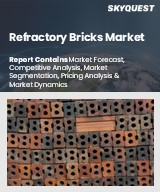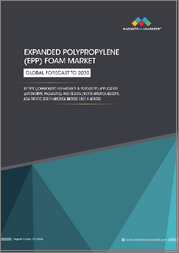
|
시장보고서
상품코드
1804812
피싱 와이어 로프 시장 : 재료, 구조, 카테고리, 직경, 용도, 최종 용도별 - 세계 예측(2025-2030년)Fishing Wire Rope Market by Material, Construction, Category, Diameter, Application, End Use - Global Forecast 2025-2030 |
||||||
피싱 와이어 로프 시장은 2024년에는 2억 516만 달러로 평가되었으며, 2025년에는 2억 1,464만 달러, CAGR 4.84%로 성장하여 2030년에는 2억 7,246만 달러에 달할 것으로 예측됩니다.
| 주요 시장 통계 | |
|---|---|
| 기준 연도 2024년 | 2억 516만 달러 |
| 추정 연도 2025년 | 2억 1,464만 달러 |
| 예측 연도 2030년 | 2억 7,246만 달러 |
| CAGR(%) | 4.84% |
해상용 피싱 와이어 로프의 의사결정을 형성하는 구조, 작동, 재료의 역학에 대해 간략하게 설명합니다.
피싱 와이어 로프 부문은 연안 양식장부터 심해 트롤 어구까지 다양한 해상 작업을 지원하고 있습니다. 이 주요 요약은 공급망 전반에 걸쳐 조달 의사결정과 제품 디자인 선택을 변화시키고 있는 중요한 구조적, 규제적, 운영적 역학을 종합한 것입니다. 재료 성능의 트레이드오프, 진화하는 구조적 선호도, 최종사용자가 혹독한 해양 환경에서 내구성과 관리성의 균형을 맞추는 방법 등을 다루고 있습니다.
규제 강화, 소재 혁신, 지속가능성에 대한 기대, 공급망의 강인함이 낚싯줄 산업의 역학을 재구성하는 방법, 낚싯줄 산업의 역동성을 재구성하는 방법
피싱 와이어 로프를 둘러싼 환경은 조달 우선순위와 제품 개발 궤도를 변화시키고 있는 몇 가지 상호 연관된 변화로 인해 변화하고 있습니다. 첫째, 해사 당국과 인증 기관의 규제 및 안전 감시가 강화되면서 예측 가능한 피로 수명과 내식성을 입증한 로프의 채택이 가속화되고 있습니다. 그 결과, 제품 검증 프로그램과 제3자 테스트 프로토콜은 공급업체 인증 프로세스에 필수적인 요소로 자리 잡았습니다.
미국의 2025년 관세 개입으로 조달의 경제성이 변화하고, 지역적 생산 전략이 장려되었습니다.
최근 미국이 2025년에 시행한 관세 조치는 낚시용 와이어 로프 구매자들에게 세계 조달 경제와 공급업체 선정 기준을 재조정하는 계기가 되었습니다. 관세는 비용 차이를 가져왔고, 많은 바이어들은 조달 리드 타임 연장, 입찰 사양 재설계, 총 상륙 비용 및 단가 재평가 등 조달 프레임워크 조정을 통해 현재 이를 내재화하고 있습니다. 실제로 바이어들은 국산과 수입품을 비교할 때 관세, 내륙 물류, 컴플라이언스 비용을 고려하고 있으며, 조달팀은 보다 상세한 비용 모델링 접근 방식을 채택하고 있습니다.
재료, 구조, 카테고리, 직경, 용도, 최종 용도에 걸친 상세한 세분화를 통해 기술적 요구사항과 상업적 우선순위가 어디에 차이가 있는지를 파악할 수 있습니다.
통찰력 있는 세분화를 통해 제품 디자인, 공급업체 역량, 최종 용도 요구사항이 교차하는 지점을 명확히 하고, 재료, 구조, 카테고리, 직경, 용도, 최종 용도 벡터에 걸쳐 명확한 수요 촉진요인을 강조합니다. 소재별로는 탄소강, 아연도금강, 스테인리스강, 합성섬유가 조사 대상이며, 각각 고유한 내식성, 강도 대 중량, 검사 체계가 있습니다. 구조별로는 6X19, 6X19, 6X36, 7X7이 있으며, 각각의 구조가 윈치라인, 호이스트, 정적 계류라인에 대한 적합성에 영향을 미치는 굽힘 특성 및 내마모성에 차이가 있습니다. 카테고리별로는 브레이드, 평행폐쇄, 나선형이 있으며, 이는 굽힘 피로 거동과 시브, 블록과의 적합성을 변화시킵니다. 직경별로 시장은 3-6mm, 6-10mm, 10mm 이상, 3mm 이하로 조사되었으며, 직경 범위는 안전한 작업 하중, 핸들링 인체공학, 릴 보관 전략에 영향을 미칩니다. 용도별로는 양식업, 기어 조립, 안전장치, 트롤 어업으로 시장을 조사했으며, 용도별로 마모 패턴, 화학제품 노출, 부하 주기가 다릅니다. 최종 용도에 따라 양식장, 장비 공급업체, 어선단별로 시장을 조사하고, 각 최종사용자 그룹은 서로 다른 성능 속성과 상업적 조건을 우선순위로 삼고 있습니다.
다양한 지역 수요, 제조 클러스터, 규제 체계가 세계 시장 전체의 공급망 설계 및 제품 맞춤화의 필요성을 어떻게 형성하고 있는가?
전체 피싱 와이어 로프 생태계에서 공급망 토폴로지, 규제 의무, 특정 기술 요구 사항의 발생률은 지역 역학에 크게 영향을받습니다. 미국 지역은 성숙한 선단 운영자와 집중적인 양식 투자로 인해 강력한 추적성과 입증된 현장 성능을 갖춘 로프에 대한 수요를 주도하고 있습니다. 유럽, 중동 및 아프리카에서는 규제 조화와 기후 조건의 다양화로 인해 부식 저감 전략과 공급업체와의 관계 다각화에 대한 요구가 다양해지고 있습니다. 한편, 아시아태평양은 밀집된 제조 클러스터, 통합된 공급업체, 고도의 제품 혁신이 특징이지만, 규제 기준도 다양하여 세계 조달 사양에 대한 신중한 전환이 필요합니다.
복잡한 해상 요구사항에 대응하기 위해 테스트 무결성, 애프터마켓 서비스, 공동 사양을 중시하는 경쟁사 포지셔닝 및 공급업체 전략
피싱 와이어 로프 분야의 경쟁 세력은 레거시 제조업체, 전문 가공 제조업체, 엔드 투 엔드 솔루션을 제공하는 수직 통합형 공급업체가 혼합되어 있습니다. 주요 기업들은 기술 전문 지식, 품질 보증 시스템, 로프 검사 프로그램 및 접합 워크샵과 같은 애프터마켓 지원을 결합하여 차별화를 꾀하고 있습니다. 대형 공급업체는 제품 주장을 입증하기 위해 실험실 검증 및 내구성 테스트에 투자하고, 틈새 제조업체는 고도로 특수한 용도에 대응하기 위해 맞춤형 구조와 신속한 프로토타이핑에 중점을 둡니다.
피싱 와이어 로프 프로그램에서 공급업체 자격, 자재 선택, 공급 탄력성 강화를 위한 조달, 엔지니어링, 운영 리더를 위한 실행 가능한 조치
규제가 강화되고 재료 옵션이 진화하는 환경에서 우위를 확보하기 위해 업계 리더는 기술적 엄격함과 상업적 규율을 연결하는 일련의 실용적인 행동을 우선시해야 합니다. 첫째, 종합적인 테스트 데이터, 해당되는 경우 제3자 검증, 그리고 예측 가능한 사용 중 성능을 보장하기 위한 문서화된 유지보수 절차를 요구하는 견고한 공급업체 인증 프로세스에 투자해야 합니다. 둘째, 조달, 엔지니어링, 운영을 포함한 부서 간 팀을 구성하고 기술 사양과 취급 방법, 보관 조건, 수리 프로토콜을 일치시켜 조기 고장 및 보증 관련 분쟁을 줄입니다.
실무자 인터뷰, 기술 문헌 검토, 상호 검증을 결합한 엄격한 혼합 방법론 접근 방식을 통해 업무 현실과 엔지니어링 관계를 반영하는 조사 결과를 보장합니다.
본 Executive Summary의 기초가 되는 조사 방법은 기술적 검증과 이해관계자의 인사이트를 결합하도록 설계된 구조화된 조사 방법을 통합한 것입니다. 1차 입력에는 함대 관리자, 양식장 운영자, 제품 엔지니어, 공급업체 품질 책임자 등 업계 실무자와의 인터뷰를 통해 고장 모드, 처리 방법, 조달 제약에 대한 질적 배경을 제공했습니다. 2차 입력은 와이어 로프 구조에 관한 기술 문헌, 부식 및 피로 메커니즘에 관한 재료 과학 간행물, 해상 안전 및 제품 인증과 관련된 규제 지침입니다.
어업용 와이어 로프 사업에서 탄력적인 의사결정을 위한 성능 검증, 공급업체 협력, 공급망 설계 원칙 요약
요약하면, 어업용 와이어 로프를 둘러싼 환경은 성능 검증, 서비스 지향적 인 공급업체와의 관계, 전략적 공급망 설계를 강조하는 전환기를 맞이하고 있습니다. 소재의 다양화, 구조의 혁신, 규제 강화는 안전, 내구성, 비용 효율성을 최적화하려는 이해관계자들에게 도전과 기회를 동시에 창출하고 있습니다. 조달, 엔지니어링, 유지보수 업무를 연계하는 사업자는 기술적 진보를 측정 가능한 업무 개선으로 이어갈 수 있는 가장 유리한 위치에 있습니다.
목차
제1장 서문
제2장 조사 방법
제3장 주요 요약
제4장 시장 개요
제5장 시장 역학
제6장 시장 인사이트
- Porter's Five Forces 분석
- PESTEL 분석
제7장 미국 관세의 누적 영향 2025
제8장 피싱 와이어 로프 시장 : 소재별
- 탄소강
- 아연도금 강
- 스테인리스강
- 합성섬유
제9장 피싱 와이어 로프 시장 : 구조별
- 6X19
- 6X36
- 7X7
제10장 피싱 와이어 로프 시장 : 카테고리별
- 편조
- 병렬 클로즈드
- 스파이럴
제11장 피싱 와이어 로프 시장 : 직경별
- 3-6mm
- 6-10mm
- 10mm 이상
- 3mm 미만
제12장 피싱 와이어 로프 시장 : 용도별
- 양식업
- 기어 어셈블리
- 안전 장비
- 트롤링
제13장 피싱 와이어 로프 시장 : 최종 용도별
- 양식장
- 장비 공급업체
- 어선단
제14장 아메리카의 피싱 와이어 로프 시장
- 미국
- 캐나다
- 멕시코
- 브라질
- 아르헨티나
제15장 유럽, 중동 및 아프리카의 피싱 와이어 로프 시장
- 영국
- 독일
- 프랑스
- 러시아
- 이탈리아
- 스페인
- 아랍에미리트
- 사우디아라비아
- 남아프리카공화국
- 덴마크
- 네덜란드
- 카타르
- 핀란드
- 스웨덴
- 나이지리아
- 이집트
- 튀르키예
- 이스라엘
- 노르웨이
- 폴란드
- 스위스
제16장 아시아태평양의 피싱 와이어 로프 시장
- 중국
- 인도
- 일본
- 호주
- 한국
- 인도네시아
- 태국
- 필리핀
- 말레이시아
- 싱가포르
- 베트남
- 대만
제17장 경쟁 구도
- 시장 점유율 분석, 2024
- FPNV 포지셔닝 매트릭스, 2024
- 경쟁 분석
- WireCo WorldGroup
- KISWIRE LTD.
- Mazzella Lifting Technologies, Inc.
- Lexco Cable by K.N.M. Industries, Inc.
- Xinglun Rope and Cable Co., Ltd.
- Remer Srl
- EUROFUNI SRL
- TOKYO ROPE MFG. CO., LTD. by Nippon Steel Corporation
- J-WITEX Corporation
- Osaka Coat Rope Co., Ltd.
- KOBELCO WIRE COMPANY, LTD.
- Asano Metal Industry Co., Ltd.
- PENNACCHIO DI PENNACCHIO GIAN PAOLO & C. SNC
- Tufropes Pvt Ltd.
- Southern Ropes Ltd.
- NV Bekaert SA
- Usha Martin by Tata Steel Limited
- Garware Technical Fibres Limited
- The Great Polymers
- Samson Rope Technologies, Inc.
제18장 리서치 AI
제19장 리서치 통계
제20장 리서치 컨택트
제21장 리서치 기사
제22장 부록
KSM 25.09.11The Fishing Wire Rope Market was valued at USD 205.16 million in 2024 and is projected to grow to USD 214.64 million in 2025, with a CAGR of 4.84%, reaching USD 272.46 million by 2030.
| KEY MARKET STATISTICS | |
|---|---|
| Base Year [2024] | USD 205.16 million |
| Estimated Year [2025] | USD 214.64 million |
| Forecast Year [2030] | USD 272.46 million |
| CAGR (%) | 4.84% |
A concise orientation to the structural, operational, and material dynamics shaping contemporary fishing wire rope decision-making across maritime applications
The fishing wire rope sector underpins a broad array of maritime operations, from coastal aquaculture pens to deep-sea trawling gear. This executive summary synthesizes the critical structural, regulatory, and operational dynamics that are reshaping procurement decisions and product design choices across the supply chain. It highlights material performance trade-offs, evolving construction preferences, and the ways end users balance durability against manageability in harsh marine environments.
As stakeholders navigate increasingly complex cost, safety, and sustainability pressures, the industry is experiencing a convergence of traditional metallurgical approaches with high-performance synthetic alternatives. The following pages provide context for strategic decision-making by clarifying where technical innovations, regulatory shifts, and commercial behavior intersect. By framing these factors in relation to current operational imperatives, the summary helps senior leaders prioritize investments in product qualification, supplier relationships, and standards alignment.
How regulatory tightening, material innovation, sustainability expectations, and supply-chain resilience are jointly reshaping fishing wire rope industry dynamics
The landscape for fishing wire rope is being transformed by a handful of interconnected shifts that are altering procurement priorities and product development trajectories. First, there is heightened regulatory and safety scrutiny from maritime authorities and certification bodies, which is accelerating the adoption of ropes that demonstrate predictable fatigue life and corrosion resistance. As a result, product validation programs and third-party testing protocols have become integral to supplier qualification processes.
Second, technological advances in metallurgy, coatings, and fiber chemistry are expanding the palette of available solutions, enabling new hybrid constructions that aim to balance weight, flexibility, and strength. This innovation is complemented by improvements in predictive maintenance tools and remote monitoring that permit operators to extend service lives while reducing unexpected downtime. Third, sustainability considerations, including lifecycle impacts and recyclability, are progressively influencing public procurement and major fleet operators, shifting demand toward materials and designs that can deliver environmental benefits without compromising safety. Finally, supply-chain resilience concerns are prompting companies to diversify sourcing strategies and to invest in closer vendor collaboration, with longer-term agreements and joint testing programs emerging as mechanisms to secure continuity of supply and technical support.
The 2025 US tariff interventions have altered sourcing economics and incentivized regional production strategies, prompting procurement and engineering alignment to manage compliance and costs
Recent tariff actions implemented by the United States in 2025 have recalibrated global sourcing economics and supplier selection criteria for fishing wire rope purchasers. Tariffs have introduced cost differentials that many buyers are now internalizing through adjustments to procurement frameworks, including longer procurement lead times, redesigned tender specifications, and the re-evaluation of total landed cost versus unit price. In practice, buyers are increasingly factoring in duties, inland logistics, and compliance costs when comparing domestic versus imported options, prompting procurement teams to adopt more granular cost-modeling approaches.
Concurrently, tariffs have incentivized some manufacturers to re-assess regional production footprints and to explore nearshoring or regional assembly hubs to mitigate duty exposure. This dynamic has strengthened commercial interest in suppliers offering localized inventory pools, flexible consignment models, or value-added services such as pre-assembly and testing. For operators that cannot easily substitute materials due to performance or certification constraints, the tariffs have amplified pressure on engineering teams to identify efficiency gains elsewhere in the bill of materials or operations. Ultimately, these policy-driven shifts are fostering closer collaboration between procurement, engineering, and logistics functions to ensure decisions account for compliance risks, service-level requirements, and lifecycle cost implications.
Detailed segmentation across material, construction, category, diameter, application, and end-use that reveals where technical requirements and commercial priorities diverge
Insightful segmentation clarifies where product design, supplier competence, and end-user requirements intersect, and it highlights distinct demand drivers across material, construction, category, diameter, application, and end-use vectors. Based on Material, the market is studied across Carbon Steel, Galvanized Steel, Stainless Steel, and Synthetic Fiber, each presenting unique corrosion resistance, strength-to-weight, and inspection regimes; these differences shape inspection intervals and maintenance protocols. Based on Construction, the market is studied across 6X19, 6X36, and 7X7, with each construction offering divergent flexural characteristics and abrasion tolerance that influence suitability for winch lines, hoists, or static mooring lines. Based on Category, the market is studied across Braided, Parallel-Closed, and Spiral, categories that alter bending fatigue behavior and compatibility with sheaves and blocks. Based on Diameter, the market is studied across 3-6mm, 6-10mm, Above 10mm, and Up To 3mm, with diameter ranges informing safe working loads, handling ergonomics, and reel storage strategies. Based on Application, the market is studied across Aquaculture, Gear Assembly, Safety Equipment, and Trawling, applications that impose distinct abrasion patterns, chemical exposures, and load cycles. Based on End Use, the market is studied across Aquaculture Farms, Equipment Suppliers, and Fishing Fleets, each end user grouping prioritizing different performance attributes and commercial terms.
These segmentation lenses enable decision-makers to match technical requirements to supplier capabilities and to identify where incremental product customization or standardization can yield operational benefits. For example, aquaculture operators frequently prioritize corrosion resistance and abrasion protection above raw tensile strength, while fleet operators favor constructions that balance flexibility with predictable fatigue performance. Recognizing these nuances supports disciplined product specification and supplier selection practices.
How divergent regional demands, manufacturing clusters, and regulatory regimes are shaping supply-chain design and product customization imperatives across global markets
Regional dynamics profoundly influence supply-chain topology, regulatory obligations, and the incidence of specific technical requirements across the fishing wire rope ecosystem. The Americas region shows a blend of mature fleet operators and concentrated aquaculture investments, which drives demand for ropes that combine robust traceability and certification with proven field performance. In Europe, Middle East & Africa, regulatory harmonization efforts and a patchwork of climatic conditions create differentiated needs for corrosion mitigation strategies and diversified supplier relationships. Meanwhile, Asia-Pacific is characterized by dense manufacturing clusters, integrated suppliers, and a high degree of product innovation, but also varying regulatory standards that require careful translation into global procurement specifications.
Consequently, companies operating trans-regionally must reconcile product standardization with regional customization, adjusting inventory staging, technical documentation, and warranty frameworks to align with local testing regimes and environmental exposures. Firms that proactively map regional technical requirements and logistics constraints can preempt supply disruptions and reduce specification mismatches while enhancing responsiveness to customer needs.
Competitive positioning and supplier strategies that emphasize testing integrity, aftermarket services, and collaborative specification to address complex maritime requirements
Competitive dynamics within the fishing wire rope sector reflect a mix of legacy manufacturers, specialized fabricators, and vertically integrated suppliers that provide end-to-end solutions. Key companies differentiate through a combination of technical expertise, quality assurance systems, and aftermarket support offerings such as rope inspection programs and splicing workshops. Leading suppliers invest in laboratory validation and endurance testing to substantiate product claims, while niche fabricators focus on bespoke constructions and rapid prototyping to serve highly specialized applications.
Partnership models are becoming more common, with equipment suppliers and rope manufacturers collaborating on joint-specification projects to optimize compatibility with winches, sheaves, and safety equipment. Additionally, some firms emphasize lifecycle services, offering in-field training and condition-monitoring services that reduce total ownership risk for fleet operators and aquaculture managers. For procurement teams, supplier selection increasingly hinges on demonstrable technical competence, logistical reliability, and the ability to provide clear traceability and compliance documentation.
Actionable measures for procurement, engineering, and operations leaders to fortify supplier qualification, material selection, and supply resiliency in fishing wire rope programs
To secure advantage in an environment of tightening regulation and evolving material options, industry leaders should prioritize a set of practical actions that bridge technical rigor with commercial discipline. First, invest in robust supplier qualification processes that demand comprehensive test data, third-party verification when applicable, and documented maintenance procedures to ensure predictable in-service performance. Second, establish cross-functional teams that include procurement, engineering, and operations to align technical specifications with handling practices, storage conditions, and repair protocols, thereby reducing premature failures and warranty disputes.
Third, pursue modular sourcing strategies that combine core suppliers for standardized items with specialty partners for customized requirements, enabling agility without sacrificing quality. Fourth, adopt an evidence-based approach to material selection that compares lifecycle impacts, inspection intervals, and real-world failure modes rather than relying solely on nominal tensile ratings. Finally, enhance resilience by cultivating regional inventory reserves and service partnerships that can be mobilized during supply disruptions. Implementing these recommendations will help organizations manage total cost of ownership while maintaining operational safety and uptime.
A rigorous mixed-methods approach combining practitioner interviews, technical literature review, and cross-validation to ensure findings reflect operational realities and engineering relationships
The research underpinning this executive summary integrates a structured methodology designed to combine technical validation with stakeholder insights. Primary inputs included interviews with industry practitioners spanning fleet managers, aquaculture operators, product engineers, and supplier quality leads, which provided qualitative context on failure modes, handling practices, and procurement constraints. Secondary inputs comprised technical literature on wire rope construction, materials science publications addressing corrosion and fatigue mechanisms, and regulatory guidance relevant to maritime safety and product certification.
Analytical steps included cross-referencing material performance characteristics with application-specific load cycles and environmental exposures, mapping supplier capabilities against specification requirements, and synthesizing procurement behaviors observed in interviews into practical decision frameworks. Quality control measures involved triangulating interview findings with published technical tests and ensuring that conclusions emphasize observed trends and verifiable technical relationships rather than speculative projections.
A cohesive summary of performance validation, supplier collaboration, and supply-chain design principles that will guide resilient decision-making in fishing wire rope operations
In summary, the fishing wire rope environment is navigating a transition that emphasizes validated performance, service-oriented supplier relationships, and strategic supply-chain design. Material diversification, construction innovations, and heightened regulatory expectations are creating both challenges and opportunities for stakeholders seeking to optimize safety, durability, and cost-effectiveness. Operators that align procurement, engineering, and maintenance practices will be best positioned to translate technical advances into measurable operational improvements.
Looking ahead, the most resilient organizations will be those that institutionalize rigorous supplier qualification, invest in condition-based maintenance capability, and design sourcing strategies that are responsive to regional nuances. By focusing on these priorities, firms can reduce unplanned outages, extend rope service life, and better manage the complex interplay of performance, compliance, and cost.
Table of Contents
1. Preface
- 1.1. Objectives of the Study
- 1.2. Market Segmentation & Coverage
- 1.3. Years Considered for the Study
- 1.4. Currency & Pricing
- 1.5. Language
- 1.6. Stakeholders
2. Research Methodology
- 2.1. Define: Research Objective
- 2.2. Determine: Research Design
- 2.3. Prepare: Research Instrument
- 2.4. Collect: Data Source
- 2.5. Analyze: Data Interpretation
- 2.6. Formulate: Data Verification
- 2.7. Publish: Research Report
- 2.8. Repeat: Report Update
3. Executive Summary
4. Market Overview
- 4.1. Introduction
- 4.2. Market Sizing & Forecasting
5. Market Dynamics
- 5.1. Advancements in corrosion-resistant coatings improving fishing wire rope longevity in marine environments
- 5.2. Increasing adoption of synthetic fiber wire ropes for lightweight handling in commercial fishing operations
- 5.3. Implementation of real-time monitoring sensors for predictive maintenance of fishing deck wire ropes
- 5.4. Growth in demand for customizable braided wire rope assemblies for deep-sea trawling and dredging
- 5.5. Integration of eco-friendly manufacturing processes in production of fishing wire ropes to reduce carbon footprint
- 5.6. Shift towards high-modulus polyethylene wire ropes to enhance load capacity in longline fishing
- 5.7. Development of automated spooling technologies for faster replacement of fishing winch wire ropes
- 5.8. Emerging market opportunities for heat-treated compacted wire ropes in offshore fishing vessels
- 5.9. Increased focus on regulatory compliance for fishing wire rope strength and traceability standards
- 5.10. Collaboration between rope manufacturers and fishing fleet operators for tailored wire rope solutions
6. Market Insights
- 6.1. Porter's Five Forces Analysis
- 6.2. PESTLE Analysis
7. Cumulative Impact of United States Tariffs 2025
8. Fishing Wire Rope Market, by Material
- 8.1. Introduction
- 8.2. Carbon Steel
- 8.3. Galvanized Steel
- 8.4. Stainless Steel
- 8.5. Synthetic Fiber
9. Fishing Wire Rope Market, by Construction
- 9.1. Introduction
- 9.2. 6X19
- 9.3. 6X36
- 9.4. 7X7
10. Fishing Wire Rope Market, by Category
- 10.1. Introduction
- 10.2. Braided
- 10.3. Parallel-Closed
- 10.4. Spiral
11. Fishing Wire Rope Market, by Diameter
- 11.1. Introduction
- 11.2. 3-6mm
- 11.3. 6-10mm
- 11.4. Above 10mm
- 11.5. Up To 3mm
12. Fishing Wire Rope Market, by Application
- 12.1. Introduction
- 12.2. Aquaculture
- 12.3. Gear Assembly
- 12.4. Safety Equipment
- 12.5. Trawling
13. Fishing Wire Rope Market, by End Use
- 13.1. Introduction
- 13.2. Aquaculture Farms
- 13.3. Equipment Suppliers
- 13.4. Fishing Fleets
14. Americas Fishing Wire Rope Market
- 14.1. Introduction
- 14.2. United States
- 14.3. Canada
- 14.4. Mexico
- 14.5. Brazil
- 14.6. Argentina
15. Europe, Middle East & Africa Fishing Wire Rope Market
- 15.1. Introduction
- 15.2. United Kingdom
- 15.3. Germany
- 15.4. France
- 15.5. Russia
- 15.6. Italy
- 15.7. Spain
- 15.8. United Arab Emirates
- 15.9. Saudi Arabia
- 15.10. South Africa
- 15.11. Denmark
- 15.12. Netherlands
- 15.13. Qatar
- 15.14. Finland
- 15.15. Sweden
- 15.16. Nigeria
- 15.17. Egypt
- 15.18. Turkey
- 15.19. Israel
- 15.20. Norway
- 15.21. Poland
- 15.22. Switzerland
16. Asia-Pacific Fishing Wire Rope Market
- 16.1. Introduction
- 16.2. China
- 16.3. India
- 16.4. Japan
- 16.5. Australia
- 16.6. South Korea
- 16.7. Indonesia
- 16.8. Thailand
- 16.9. Philippines
- 16.10. Malaysia
- 16.11. Singapore
- 16.12. Vietnam
- 16.13. Taiwan
17. Competitive Landscape
- 17.1. Market Share Analysis, 2024
- 17.2. FPNV Positioning Matrix, 2024
- 17.3. Competitive Analysis
- 17.3.1. WireCo WorldGroup
- 17.3.2. KISWIRE LTD.
- 17.3.3. Mazzella Lifting Technologies, Inc.
- 17.3.4. Lexco Cable by K.N.M. Industries, Inc.
- 17.3.5. Xinglun Rope and Cable Co., Ltd.
- 17.3.6. Remer Srl
- 17.3.7. EUROFUNI SRL
- 17.3.8. TOKYO ROPE MFG. CO., LTD. by Nippon Steel Corporation
- 17.3.9. J-WITEX Corporation
- 17.3.10. Osaka Coat Rope Co., Ltd.
- 17.3.11. KOBELCO WIRE COMPANY, LTD.
- 17.3.12. Asano Metal Industry Co., Ltd.
- 17.3.13. PENNACCHIO DI PENNACCHIO GIAN PAOLO & C. SNC
- 17.3.14. Tufropes Pvt Ltd.
- 17.3.15. Southern Ropes Ltd.
- 17.3.16. NV Bekaert SA
- 17.3.17. Usha Martin by Tata Steel Limited
- 17.3.18. Garware Technical Fibres Limited
- 17.3.19. The Great Polymers
- 17.3.20. Samson Rope Technologies, Inc.



















